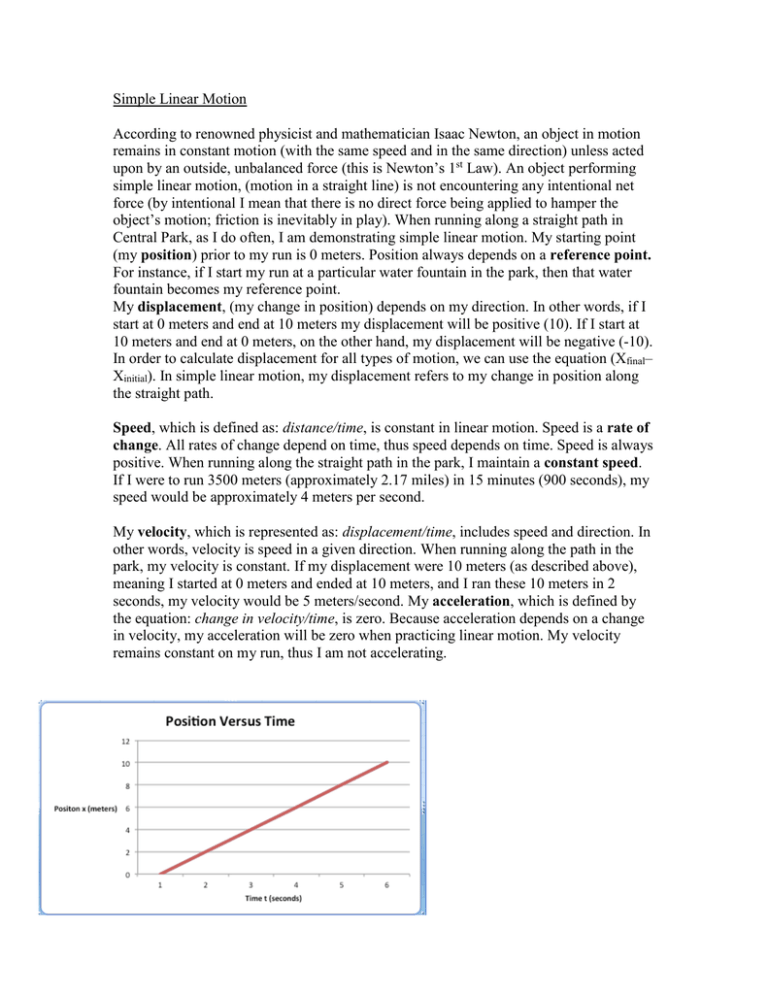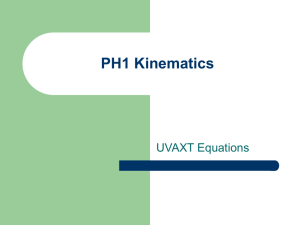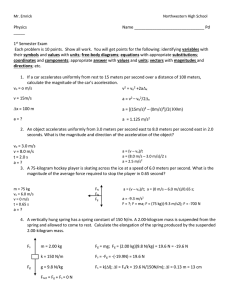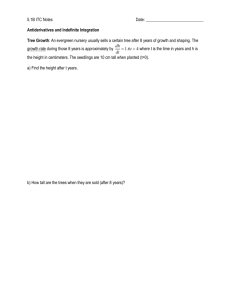Simple Linear Motion
advertisement

Simple Linear Motion According to renowned physicist and mathematician Isaac Newton, an object in motion remains in constant motion (with the same speed and in the same direction) unless acted upon by an outside, unbalanced force (this is Newton’s 1st Law). An object performing simple linear motion, (motion in a straight line) is not encountering any intentional net force (by intentional I mean that there is no direct force being applied to hamper the object’s motion; friction is inevitably in play). When running along a straight path in Central Park, as I do often, I am demonstrating simple linear motion. My starting point (my position) prior to my run is 0 meters. Position always depends on a reference point. For instance, if I start my run at a particular water fountain in the park, then that water fountain becomes my reference point. My displacement, (my change in position) depends on my direction. In other words, if I start at 0 meters and end at 10 meters my displacement will be positive (10). If I start at 10 meters and end at 0 meters, on the other hand, my displacement will be negative (-10). In order to calculate displacement for all types of motion, we can use the equation (Xfinal– Xinitial). In simple linear motion, my displacement refers to my change in position along the straight path. Speed, which is defined as: distance/time, is constant in linear motion. Speed is a rate of change. All rates of change depend on time, thus speed depends on time. Speed is always positive. When running along the straight path in the park, I maintain a constant speed. If I were to run 3500 meters (approximately 2.17 miles) in 15 minutes (900 seconds), my speed would be approximately 4 meters per second. My velocity, which is represented as: displacement/time, includes speed and direction. In other words, velocity is speed in a given direction. When running along the path in the park, my velocity is constant. If my displacement were 10 meters (as described above), meaning I started at 0 meters and ended at 10 meters, and I ran these 10 meters in 2 seconds, my velocity would be 5 meters/second. My acceleration, which is defined by the equation: change in velocity/time, is zero. Because acceleration depends on a change in velocity, my acceleration will be zero when practicing linear motion. My velocity remains constant on my run, thus I am not accelerating.


